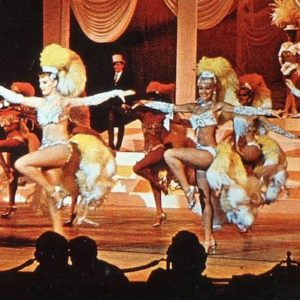Con artists are often in the news these days, but this week special attention went to a fascinating story, written by Jessica Pressler for The Cut, about Anna “Delvey,” a young grifter who allegedly swindled her way through the Manhattan elite by pretending to be a wealthy heiress from Germany. Delvey lived a lavish lifestyle of international vacations, downtown hotels, and private clubs. . .until her bills finally came due. That’s when banks (and acquaintances) started to realize what was going on. Now she’s awaiting trial in Rikers, where she’s become fascinated by her fellow inmates. According to Pressler, she’s especially interested in the murderers living beside her and has also taken note of fellow inmates charged with frauds: “This one girl,” she told Pressler, “she’s been stealing other people’s identities. I didn’t realize it was so easy.”
While Delvey luckily hasn’t murdered anyone, her story and that comment made me instantly think of Patricia Highsmith’s covetous (and murderous) antihero, Tom Ripley, whose social climbing and accumulation of goods and identities strikes a chord for so many readers: “Possessions reminded him that he existed, and made him enjoy his existence. It was as simple as that. And wasn’t that worth something? He existed. Not many people in the world knew how to, even if they had the money.”
There’s something undeniably fascinating about a grifter like that. But Ripley is just one in a long and great tradition of con artists, swindlers, grifters, and scammers in literature. Here are a just a few of the most memorable, the ones whose exploits keep on resonating long after they’re read.
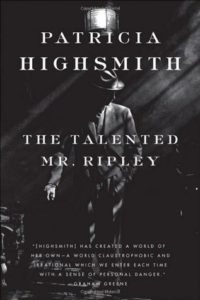
Tom Ripley in The Talented Mr. Ripley by Patricia Highsmith
Patricia Highsmith stellar career had plenty of highlights—including a brilliant Hitchcock adaptation of her novel Strangers on a Train—but her most famous creation is Tom Ripley, a charming confidence man and serial killer who starred in five of her novels starting with The Talented Mr. Ripley. Like Delvey, Ripley becomes attracted to the lavish lifestyle of the super rich. And who can blame him? It beats working for a living. In the first novel, Ripley uses his skills and smarts to con his way into the life of the rich playboy Dickie Greenleaf. Then he kills him and takes over that life. Despite his murderous and deceptive nature, it’s hard not to root for Ripley as he rips-off (or simply offs) the rich.
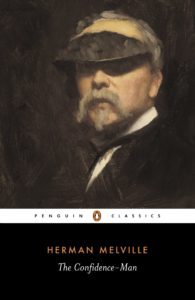
The Confidence-Man in The Confidence-Man: His Masquerade by Herman Melville
While today Melville is rightly considered one of the greatest American novelists, in his time the Moby-Dick author had little success as a fiction writer. When The Confidence-Man was published in 1857 to poor sales, bewilderment, and hostility (“ineffably meaningless and trashy” said one review), Melville gave up on writing for good. But luckily the novel is still around, because it is a masterful if dense satire about deception in America. The book takes place on a Mississippi steamboat on April Fool’s Day where a man sneaks on board and tricks the different passengers while assuming a variety of guises. The man seems less interested in how to steal money than devilish (literally?) pleasure of trickery: “Money, you think, is the sole motive to pains and hazard, deception and devilry, in this world. How much money did the devil make by gulling Eve?”

Jay Gatsby from The Great Gatsby by F. Scott Fitzgerald
While Melville’s con artist may be criminally underread, Fitzgerald’s great fraud is one of the most famous characters in literary history. Jay Gatsby shows up in his titular novel as fabulously wealthy businessman throwing absurdly extravagant parties where “men and girls came and went like moths among the whisperings and the champagne and the stars.” While Gatsby looks the part of proper American aristocrat, he’s revealed to have grown up poor and made his fortune bootlegging with gangsters. He changed his name and created a new fabulous life for himself not to defraud, but to win the heart of his love, Daisy.
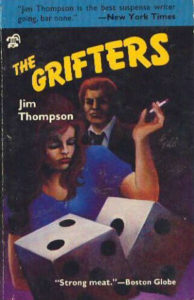
Roy Dillon from The Grifters by Jim Thompson
Hardboiled noir master Jim Thompson turned his eye to the con artist in this 1963 novel. Roy Dillon mostly does small time cons and hides the money behind the clown paintings in his hotel room while otherwise living the normal and boring life of a salesman. But when a con goes wrong and he winds up the hospital, he gets wrapped into the schemes of a bigger and more cold-blooded grifter: his mother, Lilly.

Littlefinger in A Song of Ice and Fire by George R. R. Martin
While A Song of Ice and Fire (the novels that Game of Thrones is adapted from) is famous for its gigantic dragons and evil ice elves, it also features plenty of plain ol’ human evil, especially in the form of Littlefinger. Littlefinger, like Ripley, is a highly intelligent person who resents and desires the people above him in society. Littlefinger uses his wits to climb the social and political ladder of Westeros, all while grifting the kingdom into bankruptcy as Master of Coin. Littlefinger doesn’t have the most chapters, but his schemes and machinations are behind many of the most monumental events of the epic fantasy series.
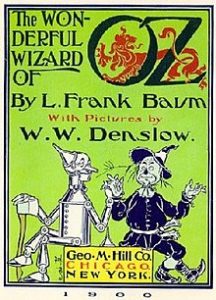
The Wizard from The Wonderful Wizard of Oz by L. Frank Baum
You can’t talk about fantasy scammers without talking about the wizard of Oz. The characters of the novel go on a grand adventure to get the help of the great and powerful wizard, who appears to Dorothy as a gigantic head. . .only to find out that he isn’t a wizard at all. He’s just an old man whose hot air balloon crashed into the magical kingdom. (Although he does know a thing or two about how appearances can deceive.) He may be an imposter, but he’s a sweetheart (“Oh, no my dear. I’m a very good man. I’m just a very bad Wizard.”), who really just wants to go back to the midwest and work in a circus.
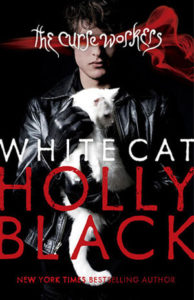
Cassel Sharpe in White Cat by Holly Black
“The most important thing for any con artist is never to think like a mark. Marks think they can get something for nothing…Marks forget that whenever something’s too good to be true, that’s because it’s a con.” It may be unfair to call Cassel Sharpe—the hero of White Cat, the first book in Holly Black’s urban fantasy series The Curse Workers—a con artist, given that he’s being magically manipulated by his criminal family. But White Cat is definitely about cons, as well as crimes, betrayals, mystical curses, impossible transformations, and a whole lot more.

Everyone in The Book of Swindles by Zhang Yingyu
One of the oldest story collections about fraudsters, The Book of Swindles is a 17th century Chinese collection entirely about, as the title suggests, swindles. The book isn’t about one con artist, but tells 84 stories divided into 24 types of swindles from “The Bag Drop” and “Robbery” to “Corruption in Education” and even “Poetry.” After the stories, the author provides commentary on the evilness or cleverness of the swindles and how to protect yourself from them. It’s a fascinating collection of ancient cons, many of which are just as common today.
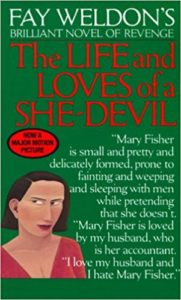
Ruth from The Life and Loves of a She-Devil by Fay Weldon
Everyone likes a good revenge tale, and Weldon tells a whopper of one in her feminist satire The Life and Loves of a She-Devil. After Ruth confronts her husband Bobbo about his affair, he calls her a “she-devil” and she decides to try that title out. (“Peel away the wife, the mother, find the woman within, and there the she devil is.”) She convinces her husband that she is dead, then torments him and his mistress, the rich romance novelist Mary Fisher. Her vengeance involves arson, prison, and identity theft of the most extreme kind.
















